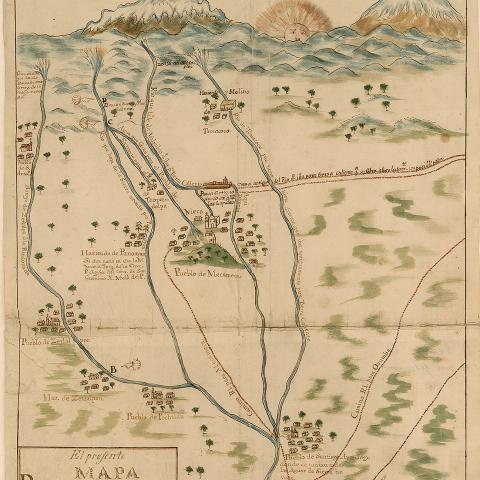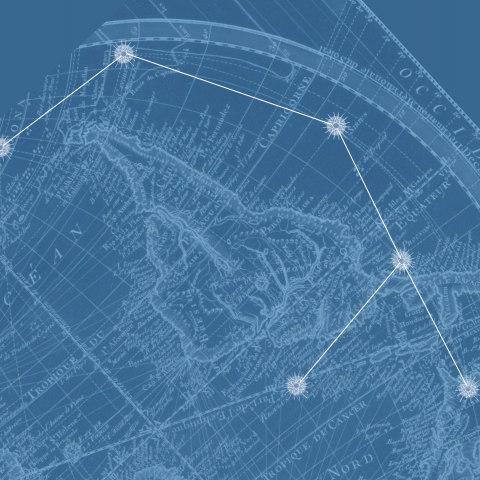As the inaugural event of a project entitled 'Exploring the Four Elements,' this exhibition showcases the John Carter Brown Library's collection of texts, illustrations, and maps that open a window onto the quest for metals below the surface of the earth in the colonial Americas. More than simply reflecting the central importance of mining in colonial society, the exhibits offer insight into ideas and values that the inhabitants of early modern Europe and the colonial Americas attached to subterranean realms and their metallic riches.
Conquest and colonization are often imagined as processes that expand horizontally through networks of knowledge, goods, and bodies across oceans and territories. In Iberian America, however, colonization often possessed a powerful vertical dimension as colonizers pushed downwards below the earth's surface in search of precious metals. The ideas that Europeans and the inhabitants of the Americas associated with the extraction of mineral wealth were varied and conflicted. By the early sixteenth century, European perceptions of the underground as a liminal and perilous realm were ceding to utilitarian attitudes that identified the subterranean as a repository of material resources. Nevertheless, anxieties persisted. Throughout the colonial era, images of imperial power and glory vied with moral worries over the pursuit of mineral wealth and the legitimacy of forced labor in the mines. Just as European Enlightenment thinkers condemned social systems founded on mining and pointed to the horrors of New World mines as evidence of Iberian barbarism, so too northern European interest in acquiring those metals surfaced in travel accounts, illustrations, and maps.
The search for subsurface wealth was intimately connected, moreover, to wider ideas that circulated between Europe and the Americas about the characteristics of American nature, both above and below ground. Volcanic and seismic activity, for example, was a focus of widespread study and debate in the colonial world. Indeed, some scholars identified causal connections between abundant metallic wealth and the occurrence of these geological phenomena. Ideas about what lay beneath the surface, therefore, were far broader than what related to mining alone.
Credits
This exhibition was curated by Heidi Scott, with assistance from Kenneth C. Ward.


